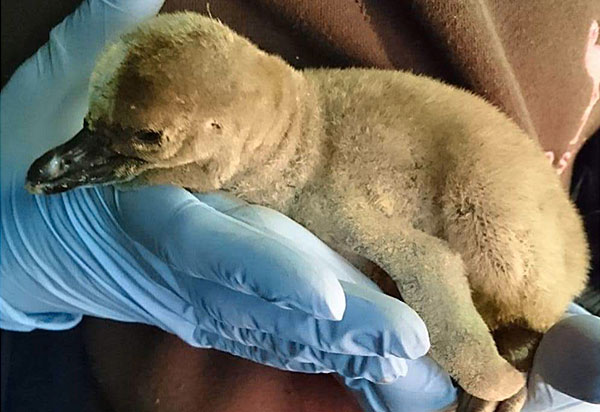Pengiun Parents

Spring is always a lovely time of year for us as we watch our penguins take to their nests to look after their eggs and newly hatched chicks. We feel like proud parents ourselves!
Our penguin’s breeding season occurs in the spring and autumn and our Humboldt penguins have just one mating partner. The female will lay two eggs in a burrow, and these will be incubated for around 40 days until the eggs hatch, with both parents sharing the work. After 12 weeks the chicks will fledge the burrow, and then become fully mature at two years old.
Our bird keepers have to be very observant during breeding season to ensure that all of the chicks are healthy and growing at a suitable steady rate. They are checked and weighed daily with their progress plotted on a graph. This means that we can help them out if they lose weight or don’t seem to be gaining weight especially if Mum and Dad aren’t feeding the chicks enough or if the chick’s brother or sister is taking most, or all, of the food!
Once the breeding season is over, penguins will usually enter a moult phase where they replace their current feathers with new ones. During this phase the penguins can look very scruffy and will spend less time in the water as their body will no longer be waterproof and insulating. They will also not eat much whilst they are moulting, so they need to make sure they eat enough before the moult begins to ensure they have enough fat reserves in their body!
All penguins are found in the southern hemisphere of the world, and Humboldt penguins are found off the coasts of Peru and Chile. They are named after the ‘Humboldt Current’ which flows from the Antarctic to the equator. This current brings cold water packed full of anchovies, other types of fish, krill and squid, a perfect feast for these penguins! Due to their adapted wings, streamlined body, and webbed feet, penguins are excellent at diving and hunting.
Unfortunately, Humboldt penguins are classed as vulnerable due to humans over-fishing in this region, and the removal of guano, i.e. their poo, (which the penguins use to construct their burrows) to be used for fertiliser. So the next time you tuck into some anchovies, make sure you know where they have come from, otherwise you could be stealing a penguin’s dinner!
Don’t forget to visit us and see our penguins along with all our other residents this spring and if you want to get a little closer to the penguins, you could enjoy our unique Penguin Experience. Details, and how to book are here!


